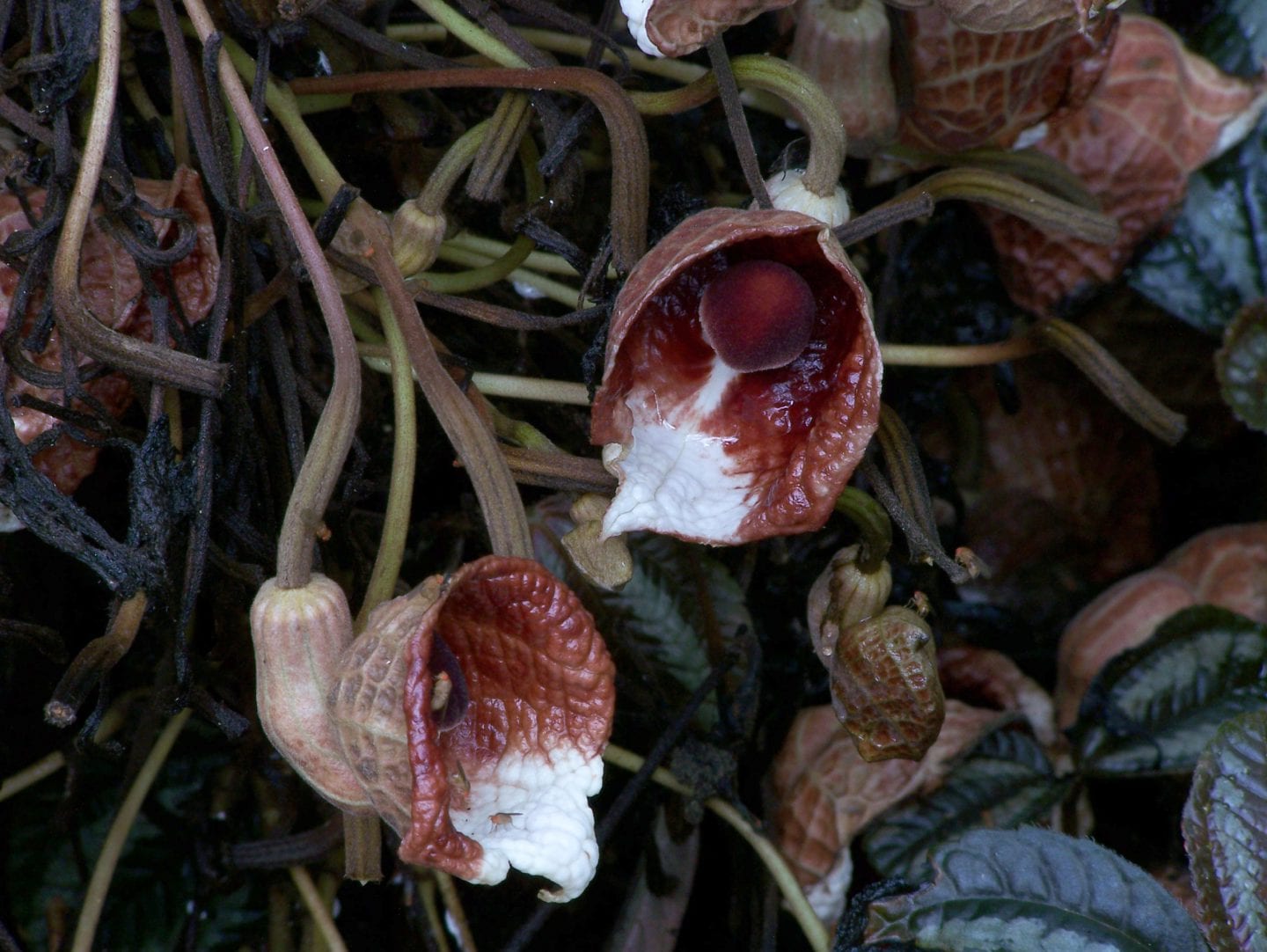Flowers of the Aristolochia arborea tree mimic fungi to trap unsuspecting pollinators
Aristolochia arborea is a small tree native to the moist mountainsides of El Salvador, Guatemala, and Mexico. There are 500 or so species of Aristolochia, with most species either found in the tropics or subtropics. Only a few are shrub or tree-like. Aristolochia arborea is special because it produces flowers close to or directly on the forest floor. In addition, at the center of the flower is what appears to be a mushroom-shaped fungus-gnat blossom from the fungi family Marasimus.
This mimicry is a trick the flower uses to attract specific pollinators. In this case, Aristolochia arborea is trying to attract mushroom gnats, which lay their eggs on fungus-gnat blossoms. Aristolochia mimics the look and scent of the blossoms, and unsuspecting gnats land on the flower to lay their eggs. Hidden inside the Aristolochia flower is a trap similar to a pitcher plant. The surface of the flower is slippery, and gnats that land slide down the flower and get loaded with pollen. The gnat escapes, only to fall prey to another Aristolochia flower. Loaded with pollen, the gnat delivers the pollen to a new flower, helping to pollinate it and ensuring more Aristolochia flowers will grow.
Adapted from the UBC Botanical Garden “Botany Photo of the Day“







